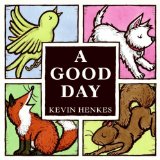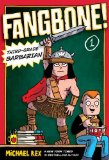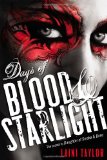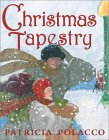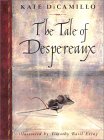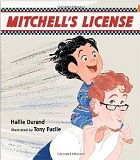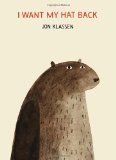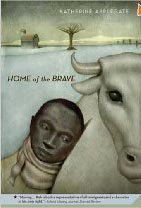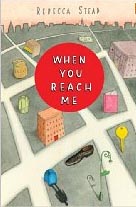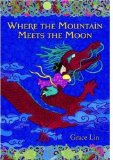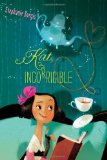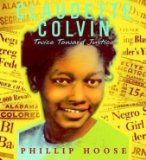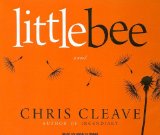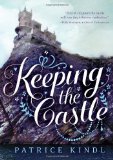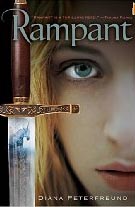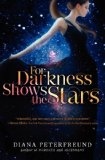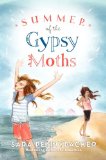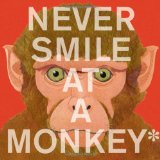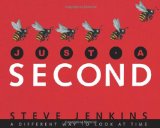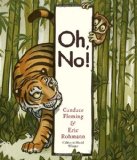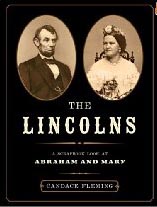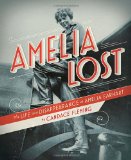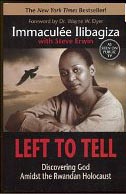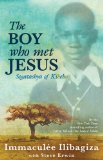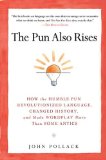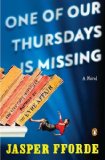 One of Our Thursdays Is Missing
One of Our Thursdays Is Missing
by Jasper Fforde
Viking, 2011. 362 pages.
Starred Review
I never thought I liked metafiction, where characters enter books. The concept always broke down at some point and just seemed silly. That was before I read Jasper Fforde. While his work is, indubitably, silly, the concepts are inscrutable and flawlessly carried out.
In this volume, we are following a written Thursday Next, a character in a book about Thursday. Thursday Next herself is missing. So is the written Thursday we are following possibly Thursday herself, hidden in the newly rebooted Book World? Whatever is the case, our Thursday has a mystery to solve, and we’re right there with her.
There is so much cleverness in this book! This series is for those who love words and literature and thinking about words and literature. I started marking passages I wanted to share with people, and now the whole book is full of post-it notes. I think I can recite these sections without giving away the plot. The plot is a good one, don’t get me wrong; but you will most enjoy these books if you love the playing the author does with the language and the concepts. For example, here’s a brief scene with some Lost Positives:
I moved quietly to the French windows and stepped out into the garden to release the Lost Positives that the Lady of Shalott had given me. She had a soft spot for the orphaned prefixless words and thought they had more chance to thrive in Fiction than in Poetry. I let the defatigable scamps out of their box. They were kempt and sheveled but their behavior was peccable if not mildly gruntled. They started acting petuously and ran around in circles in a very toward manner.
Our Thursday gets a chance to look for the real Thursday in the Real World, and Professor Plum explains the rigors of being briefly Real:
“It’s highly disorderly,” he explained, “not like here. There is no easily definable plot, and you can run yourself ragged wondering what the significance can be of a chance encounter. You’ll also find that for the most part there is no shorthand to the narrative, so everything happens in a long and painfully drawn-out sequence. Apparently the talk can be confusing — for the most part, people just say the first thing that comes into their heads.”
“Is it as bad as they say it is?”
“I’ve heard it’s worse. Here in the BookWorld, we say what needs to be said for the story to proceed. Out there? Well, you can discount at least eighty percent of chat as just meaningless drivel.”
“I never thought the percentage was that high.”
“In some individuals it can be as high as ninety-two percent. The people to listen to are the ones who don’t say very much.”
“Oh.”
“There are fun things, too,” said Plum, sensing my disappointment. “You’ll get used to it in the end, but if you go out there accepting that seventy-five percent of talk is utter twaddle and eighty-five percent of people’s lives are spent dithering around, you won’t go far wrong. But above all don’t be annoyed or distracted when random things happen for absolutely no purpose.”
“There’s always a purpose,” I said, amused by the notion of utter pointlessness, “even if you don’t understand what it is until much later.”
“That’s the big difference between here and there,” said Plum. “When things happen after a randomly pointless event, all that follows is simply unintended consequences, not a coherent narrative thrust that propels the story forward.”
Much later, I loved the character Thursday discovered involved in the mystery:
“And the name of the driver?”
“Gatsby.”
“The Great Gatsby drives taxis in his spare time?”
“No, his younger and less handsome and intelligent brother — the Mediocre Gatsby. He lives in Parody Valley over in Vanity. Here’s his address.”
When they go to see Mediocre, they meet his brother, Loser Gatsby, at a meeting:
“This is our Siblings of More Famous BookWorld Personalities self-help group,” explained Loser. “That’s Sharon Eyre, the younger and wholly disreputable sister of Jane; Roger Yossarian, the draft dodger and coward; Brian Heep, who despite admonishments from his family continues to wash daily; Rupert Bond, still a virgin and can’t keep a secret; Tracy Capulet, who has slept her way round Verona twice; and Nancy Potter, who is . . . well, let’s just say she’s a term that is subject to several international trademark agreements.”
Along the way, there are choice bits at the start of each chapter quoting from Bradshaw’s BookWorld Companion. Here are two I particularly enjoyed:
Although Outlander authors kill, maim, disfigure and eviscerate bookpeople on a regular basis, no author has ever been held to account, although lawyers are working on a test case to deal with serial offenders. The mechanism for transfictional jurisdiction has yet to be finalized, but when it is, some authors may have cause to regret their worst excesses.
Off the coast lies Vanity Island, and off Vanity likes Fan Fiction. Beyond Fan Fiction is School Essays and beyond that Excuses for Not Doing School Essays. The latter is often the most eloquent, constructed as it is in the white-hot heat of panic, necessity and the desire not to get a detention.
Though in most books written with so many jokes and so much cleverness, you wouldn’t expect to find a coherent plot, this book truly does have one, and contributed to making this a thoroughly satisfying read.
But, bottom line, reading the quotations above should give you the idea of what’s going on here. If you find those bits at all humorous, you need to read the Thursday Next books. I normally say to read them in order, but I’m starting to lose track of what has gone before, and I’m not completely sure it matters. In this book, I’m sure you could start fresh and still enjoy it.
jasperfforde.com
penguin.com
Buy from Amazon.com
Find this review on Sonderbooks at: www.sonderbooks.com/Fiction/one_of_our_thursdays_is_missing.html
Disclosure: I am an Amazon Affiliate, and will earn a small percentage if you order a book on Amazon after clicking through from my site.
Source: This review is based on a library book from the Fairfax County Public Library.
Disclaimer: I am a professional librarian, but I maintain my website and blogs on my own time. The views expressed are solely my own, and in no way represent the official views of my employer or of any committee or group of which I am part.
Please use the comments if you’ve read the book and want to discuss spoilers!
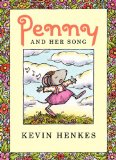 It’s been three months since I last posted on the Top 100 Writers and Illustrators from Betsy Bird’s Polls at her Fuse #8 Blog.
It’s been three months since I last posted on the Top 100 Writers and Illustrators from Betsy Bird’s Polls at her Fuse #8 Blog.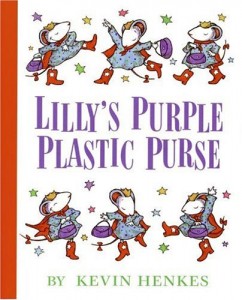 #11 Lilly’s Purple Plastic Purse
#11 Lilly’s Purple Plastic Purse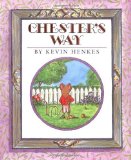 Chester’s Way 15 points, 3 votes
Chester’s Way 15 points, 3 votes Owen 15 points, 3 votes
Owen 15 points, 3 votes